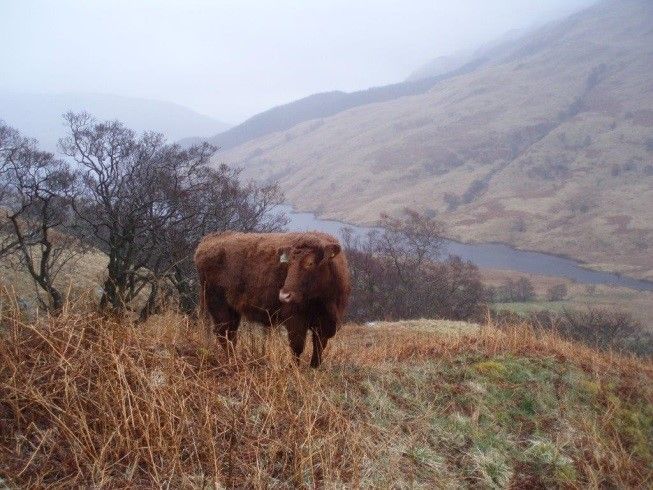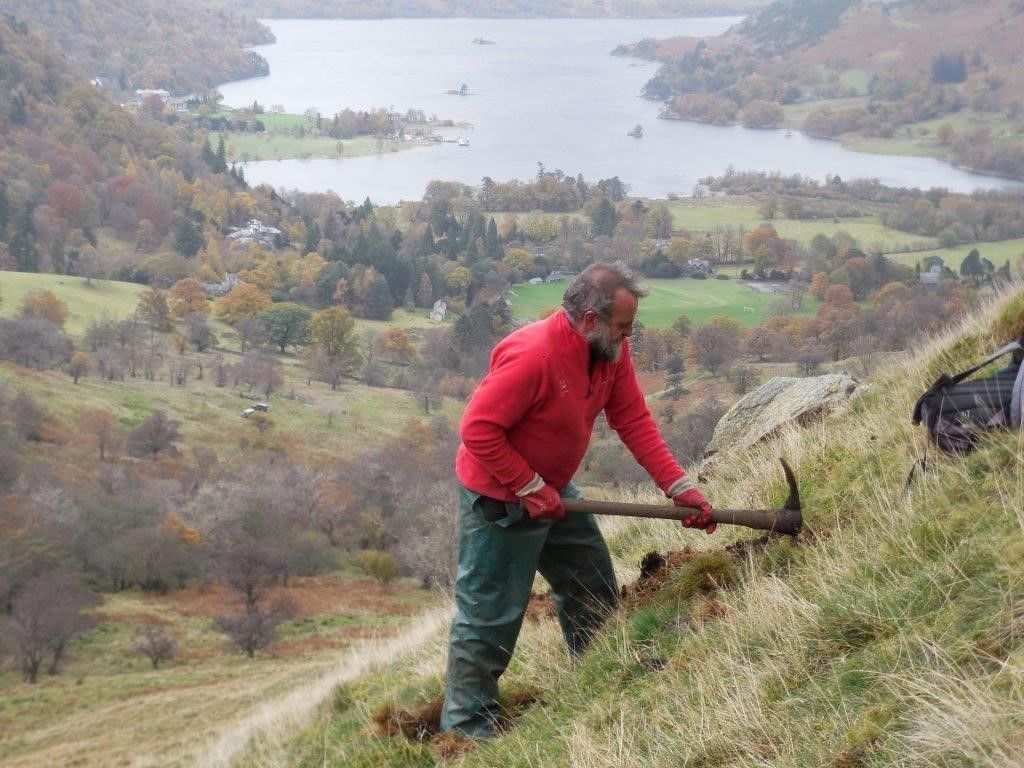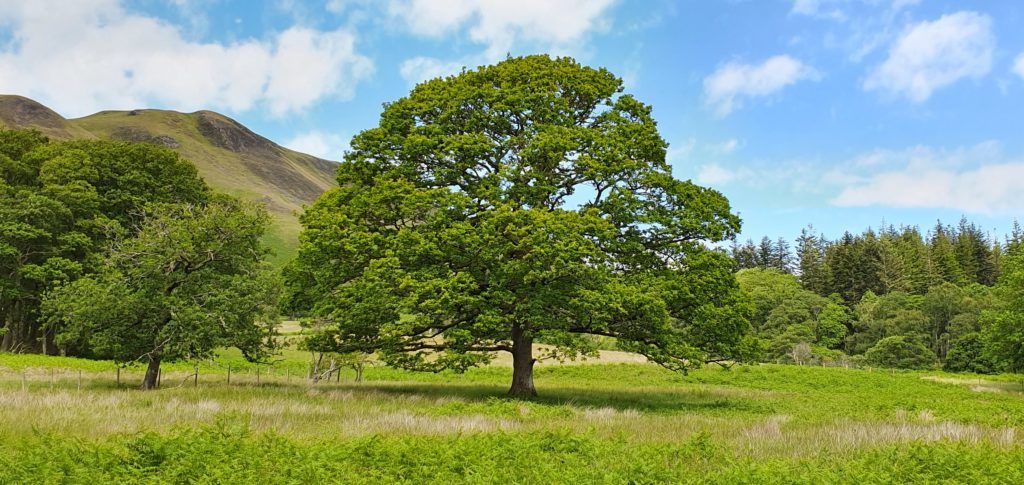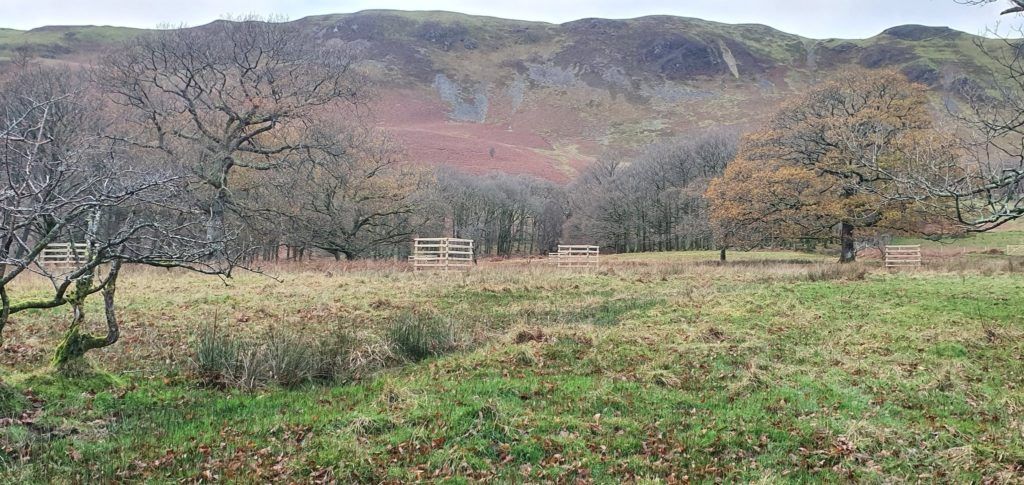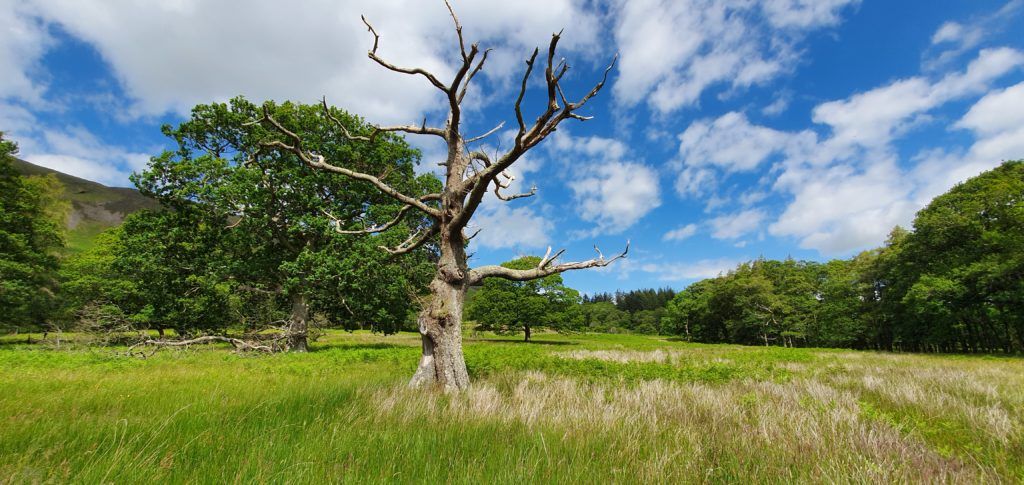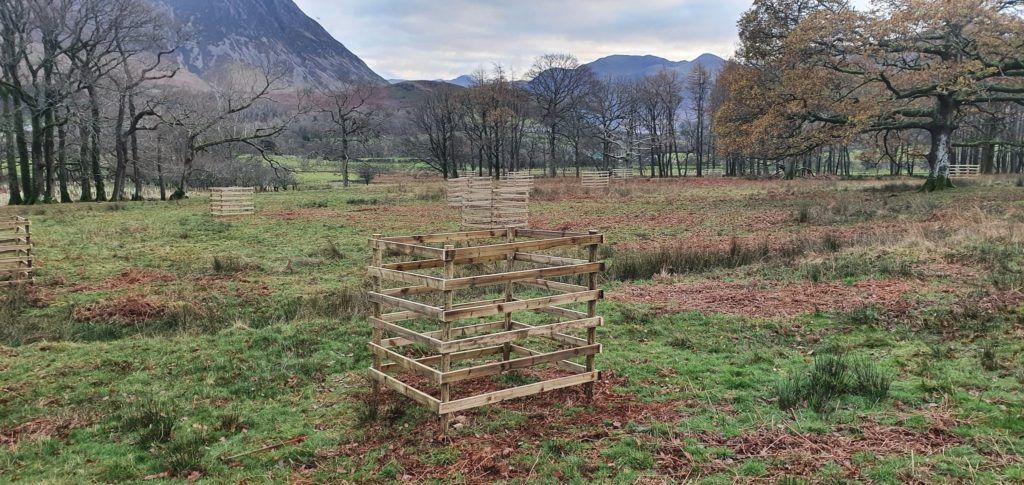Case studies and restoration
This page aims to provide examples of wood pasture and parkland sites that have, or are currently undergoing restoration.
Our latest case study
Diversifying the sward at Windsor Great Park
Parts of Windsor Great Park support species rich grassland on ancient soils, which have been spared the plough and treatment with fertilisers and chemicals. However some areas in the north of the Deer Park were previously farmed as arable, and reverted back to permanent pasture many years ago. These areas are now semi-improved grassland but with a rather species poor sward, with few herbs of conservation interest other than some Bird’s-foot Trefoil. In spite of being ‘organically managed’ such areas are not naturally developing any significant flower interest, and it was proposed to enhance these using the ‘green hay’ method, using local Windsor seed from flower rich areas at nearby Stag Meadow. Part of the motivation to do this was to increase the amount of native flowers in our grasslands, but to do this in areas of the park with old trees will hopefully provide improved nectar sources for the insects that use the old trees.
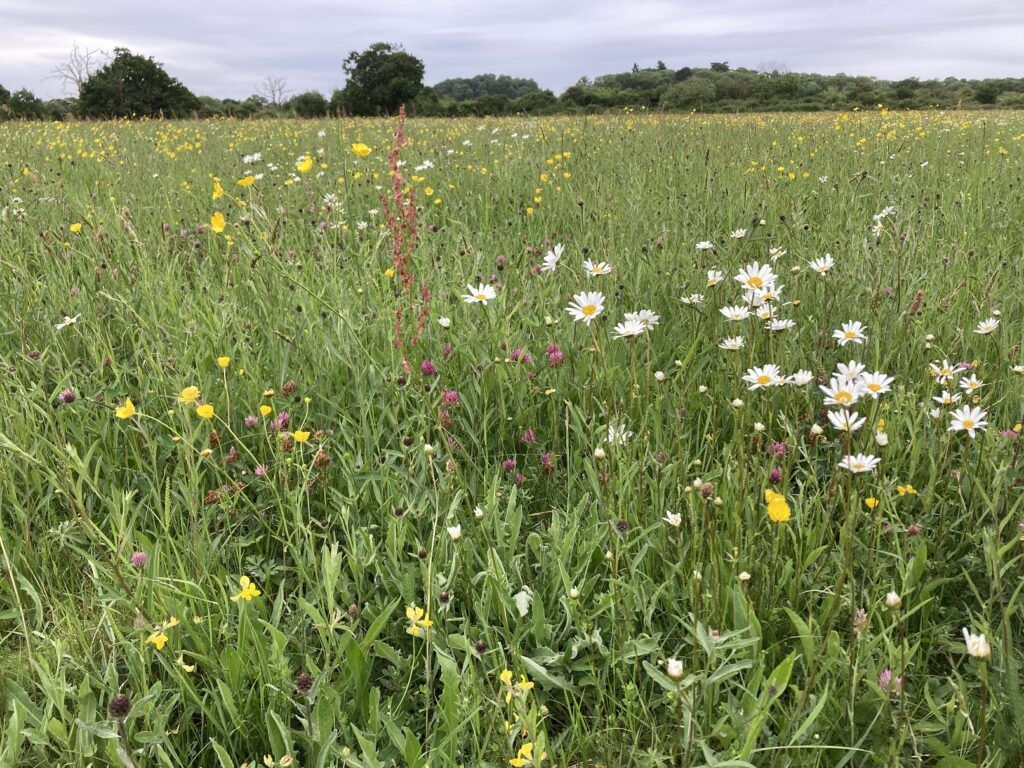
- + Read more: Diversifying the sward at Windsor Great Park
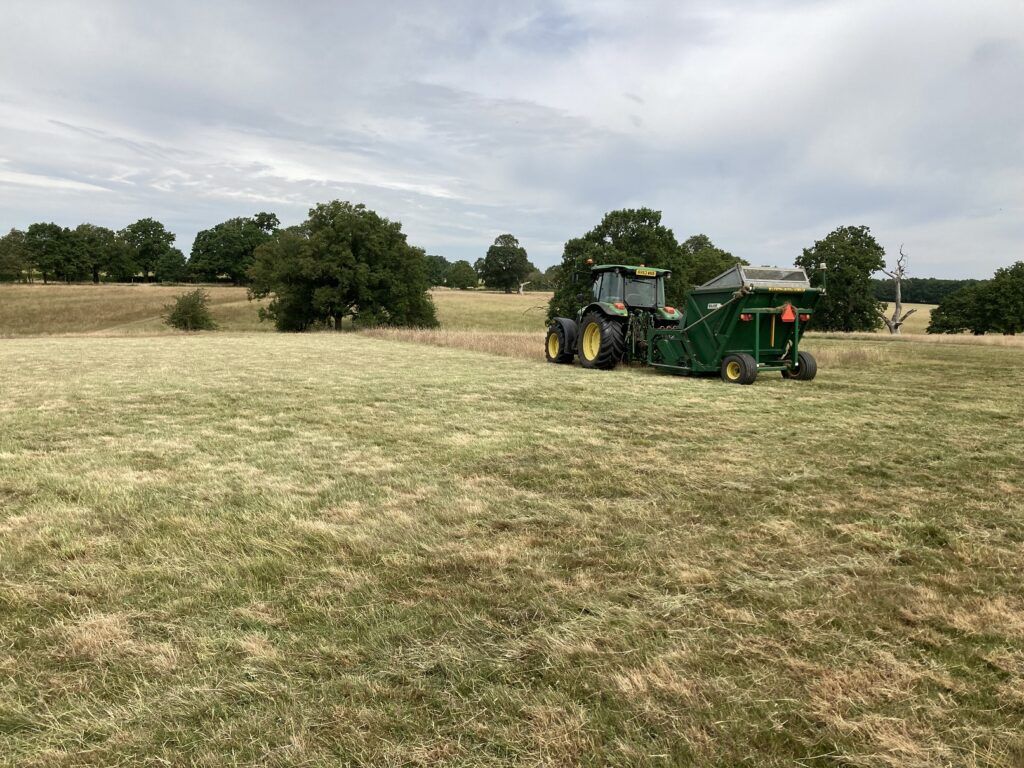
Green hay Prep1 – the grass was cut short and arisings removed. Then it was scarified with a chain harrow to open up some bare soil. The first trails were done in 2022, not especially helped by the extreme heatwave. In early July, 4 areas of about 0.5 ha were prepared by mowing grass very short and removing the arisings. Then the ground was scarified with a chain harrow to open up some bare soil. In mid July the hay was cut and loaded up into a Muck Spreader.
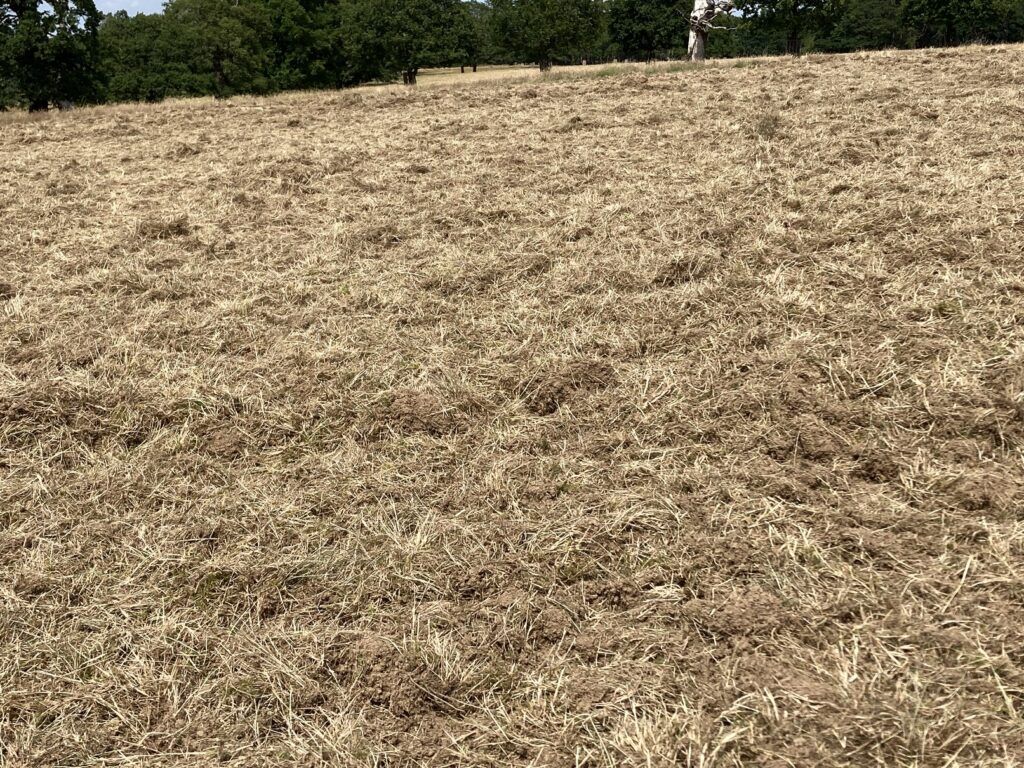
Prepared ground – showing the parched dry grass (from 2022 heatwave) and plenty of bare ground. We had planned a later cut to allow more diversity of seeds to ripen, but by mid July the hot weather had led to the grassland becoming a fire risk (close to many ancient and veteran trees). It was spread over the 4 areas. The red deer herd have constant access to these areas, and they do graze and loaf on them. It was always a risk that deer grazing might restrict flowering, but as flowers (such as harebell, heath bedstraw, heath speedwell, tormentil) are able to flower in other parts of the deer park we thought this ‘worth a try’. We decided not to fence the plots off but that might be an interesting variation on this sort of work.
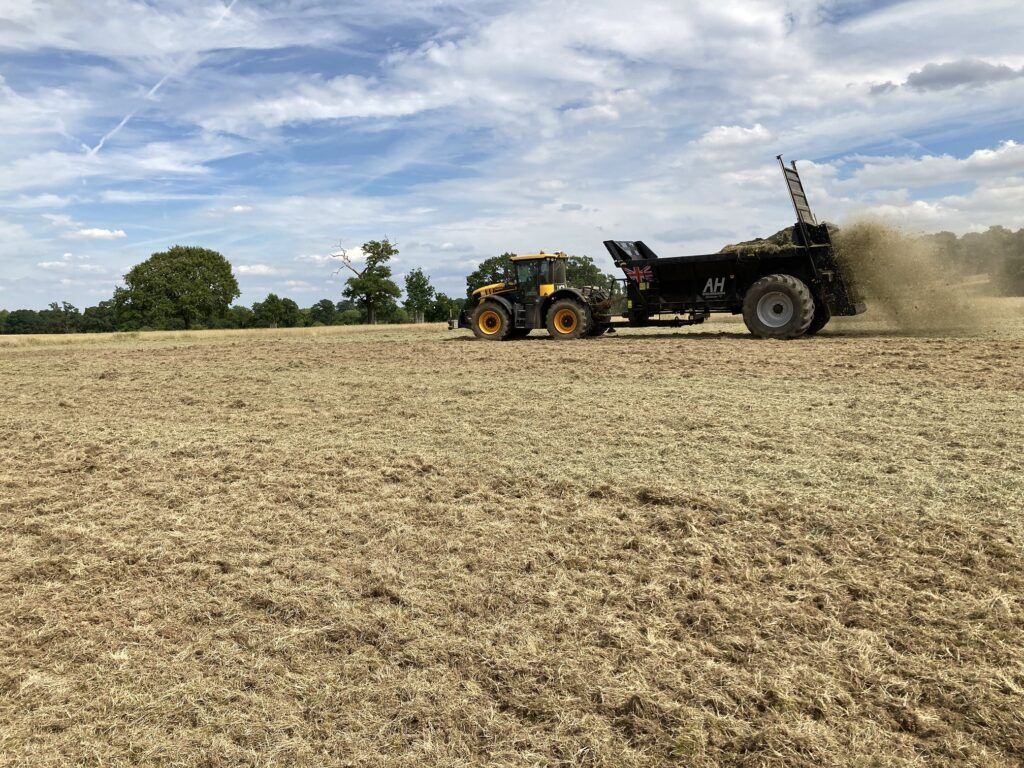
Spreading – The cut green hay was spread using a muck spreader. Seedling establishment was at the mercy of the weather and deer behaviour, but by late winter it was clear that there was a lot of germination of broad-leaved species. A walkover survey in July 2023 showed significant establishment of Common Knapweed, with quite a lot of flowering. Other forbs present include Oxeye Daisy, Sorrel and Red Clover. As such early results are encouraging and I think that there will be an increase in species and flowering in 2024. We have other areas of species-poor grassland around the Great Park to enhance and we plan to do more green hay spreading this year and beyond.
Des Sussex
thecrownestate.co.uk - + Ullswater and Troutbeck valleys
Wood pasture restoration and creation in the Ullswater and Troutbeck valleys
Area restored: 640 ha
Start and finish date: 2015–25
Why?
Cows and Trees is a landscape-scale project to restore and enhance wood pasture habitat on National Trust land in the Ullswater and Troutbeck valleys in the Lake District. Wood pasture is in decline and recognised as a Priority Habitat for conservation, and these valleys have some particularly important sites, largely on the old deer parks at Troutbeck Park Farm, Glenamara Park and Glencoyne Park. Veteran tree surveys have identified about 750 veteran trees on site. The overall aim of management is to reduce the sheep grazing pressure across the farms and entirely from the wood pastures. We shall rely on natural regeneration processes in the wood pasture areas, rather than tree planting, with the exception of native crab apples propagated by our Plant Conservation Centre from locally collected fruits.
There is support for this project through the Higher Level Stewardship. Our conservation grazing plan is to:
- Reduce sheep numbers from approximately 4,000 to about 1,900 which represents a fall of over 50% and gives a new stocking density of 0.75 sheep per hectare.
- Wood pasture-type prescriptions over an area of 745ha which represents 30% of the farmed area. The wood pastures will be grazed by about 90 cows/ponies at a stocking density of about one animal to about 8ha.
The aim of the project is to work in partnership with our tenants to demonstrate sustainable land management on a landscape scale where there is a reliance on natural processes. Although this work has been agreed through the HLS system with its 10-year window of funding, all of these prescriptions have been the basis of the new farm tenancies. Therefore, it is expected that this management will continue beyond the life of the scheme although there will be a challenge to work out a way to support it. Key to this will be targeted monitoring to record change and adjust prescriptions as required.
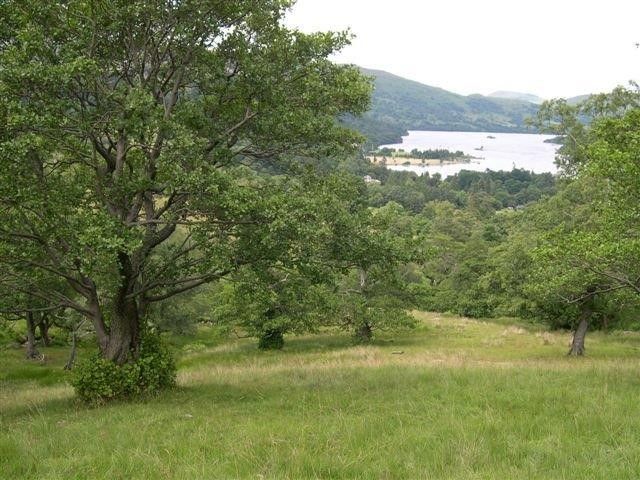
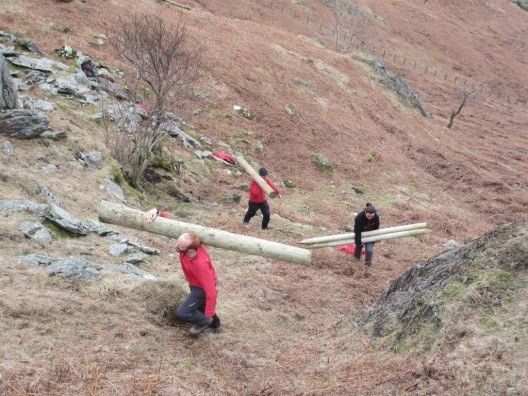
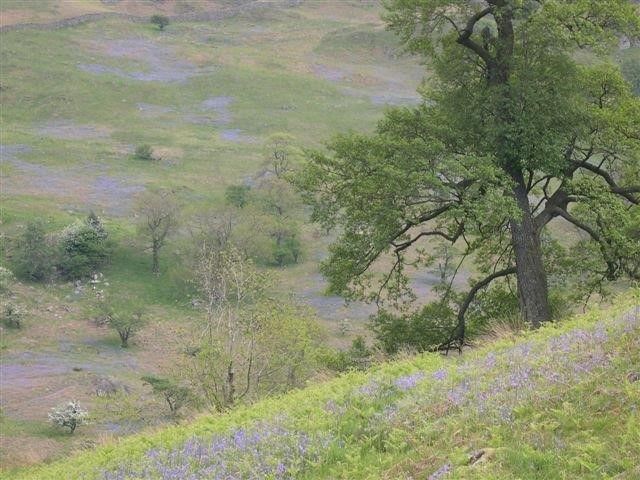
Other works associated with this project include:
- The rebuilding of 500m of ancient deer park drystone wall
- 5,000m of new fencing to secure the wood pasture boundaries and an additional 4,000m of fencing to create a river corridor
- Felling of 12ha of non-native conifer woodlands
- A new 2.2km footpath through Glencoyne Park to allow public access to the park and Aira Force waterfall which has been supported by a grant of £80,000 from Natural England
Results so far?
- This work is essentially about giving the land a rest and a chance to bounce back so very early days yet. However, the sites feel more plentiful (right word?) and a recent NE SSSI monitoring visit to Troutbeck Park was very positive about the changes in vegetation – instinctively feels right but part of the excitement is watching what happens next. .
- The obvious indicator of success will be new tree regeneration but perhaps as important will be the development of a more robust and herb-rich grass sward that is better able to absorb water. This should help with climate change and the expected increased ‘flashiness’ of rivers. This latter point is really important in Ullswater which was particularly badly hit by Storm Desmond – there is a community flood group looking at long term and short term solutions to slowing the flow and this work is very much part of the solution.
- Cows exploring the site widely, covering a huge area and thriving
Extra tips
- Don’t treat future monitoring as an add-on as it’s too easy to forget (we haven’t got it right yet) We now have a monitoring regime in place that has covered veteran trees, lichens, birds, tree regeneration and vegetation change so a fairly robust baseline to measure future change.
- Try to get the details of these schemes right at the outset as they can be very restrictive and hard to change in the future
- To work, these schemes need good tenant buy-in to carry out the management on the ground – simple things like tenants keeping sheep out of wood pastures which is no easy task with Lakeland herdwicks!
- Get in quick with contractors as there is a huge amount of this work going on at the moment and good ones get booked up early
Further information: John Pring, Countryside Manager, National Trust
- + Loweswater
Loweswater
The 7 acres of wood pasture at Loweswater was purchased by the current Landowner, Liz Crocombe in 2019 when it came up for sale. Liz is a very keen conservationist and couldn’t resist the opportunity to save the wood pasture and surrounding oak woodland after having to watch it slowly demise for the last 20 years. Despite being an area of registered ancient woodland and within a stewardship scheme, the wood pasture and surrounding Sessile Oak woodland was in a degraded state because of long-term overgrazing by sheep, widespread tree felling, and removal of all the deadwood. Apparently, this had been going on for years, and was the log supply for the local pub!
Old maps from the 1890’s show the wood pasture to be present under the name Gill Carr, suggesting historically it was even wetter and contained more Willow than it does today. There is evidence of drainage channels in the wood pasture, as well as the watercourse (Gill) being moved, which appear to have been done for the surrounding Sessile Oak woodland. Presumably, there were grand plans for the wider woodland to be a charcoal coppice woodland, but it never happened, possibly due to the difficultly of the terrain and collapse of the charcoal industry.
Despite the poor condition in early 2019, it was clear this was a very special habitat. Several very large crowned Sessile Oak trees were still standing, and despite overgrazing, the grassland within the wood pasture was a mosaic of unimproved marshy and acid grassland. Throughout Spring and Summer 2019, we rested the land completely from grazing, just to see “what pops up”, allowing all the wildflower species time to grow up and make themselves seen. I carried out a botanical survey of the wood pasture in early July, and recorded 90 species of wildflowers. The highlights were Heath-spotted Orchid Dactylorhiza maculata, Devil’s-bit Scabious Succisa pratensis, Pale Sedge Carex pallescens, and the endemic Montane Eyebright Euphrasia officinalis ssp. monticola which is a very rare wildflower restricted to a few upland grassland sites in the Lake District and North Pennines.
The birdlife was equally spectacular. By April, every tree had a male Tree Pipit setting out a territory, parachuting from the top of the canopy whilst in full song, into the grassland below. By May, the Pied Flycatchers and Redstarts had returned. To our delight the wood pasture turned out to be the battleground of several Cuckoo’s territories. I had seldom seen Cuckoos, mainly just hearing them, but here there were often 3 or 4 flying between trees either squabbling with each other, or being mobbed by the Tree Pipits. The wood pasture was alive with bird song from dawn until dusk, and became a magical place that felt a million miles away from the modern world.
With such a rich, important flora and birdlife, it was clear the wood pasture needed careful grazing management for these species to thrive.
Eyebright in particular is a fussy species that can die out very quickly with under grazing. Any grazing between May and July would have destroyed Tree Pipit and potentially Cuckoo eggs. In Late Summer 2019, after all the wildflowers had set seed and birds had fledged, we introduced some Cattle to graze back the years growth. The target structure by the end of the grazing period is to have some areas of short, well-cropped grassland, with longer tussocks dotted around and the occasional patch of denser vegetation for insects and small mammals to hide away in. By October the cows had done their job, and the wood pasture is once again allowed to rest.
Despite a very successful year for the bounceback of wildflowers and birds, the one thing in the wood pasture that wouldn’t be restoring itself any time soon are the trees. There is a fairly heavy population of Roe Deer, and that combined with the Cattle grazing has meant any natural regeneration is soon grazed off. The trees are particularly special in the wood pasture as they are grand, with huge domed crowns and canopies. However, there are only about 8 of them left in healthy condition, and all are of a similar age and structure (roughly 200 years old). There are at least 2 dozen stumps of felled Sessile Oaks within the wood pasture.
We need to get the next generation of trees up and running, and the only way to do that in a grazed wood pasture is through tree cages. This Winter we have just added 25 tree cages with support from the Woodland Trust and Cumbria Woodlands, and these will be planted up with about 50% Sessile Oak, but also a good diversity of other species. Alder, Downy Birch and Goat Willow in the wetter areas, and Crab Apple, Wild Cherry, Bird Cherry and Silver Birch in the well-drained areas.
There is a large time gap to bridge between the old and new trees, but, with time, the next generation will be well on their way, and hopefully in another 100 years, the wood pasture will still be as vibrant and alive with wildlife as it is now. Without Liz, the fortune of this site could well have been very different. 8 felled trees later and this would have just been open grassland. Some herbicide and fertiliser and it would be transformed to improved agricultural land, with the trees, wildflowers and wildlife a distant memory. Thankfully things are in place so that never happens. We now have a long-term management plan in place, and lots of ecological parameters are being monitored annually so we are able to see how the site is changing.
Rob Dixon
Conservation Ecologist, Wild Lakeland
- + Coniston wood pasture restoration, South Lakes
Coniston wood pasture restoration, South Lakes, National Trust
Wood pasture is traditionally found throughout the Lake District where it provides a link between the wooded valley bottoms and open fell tops. This habitat is under threat from high grazing levels, causing a lack of natural regeneration of trees and many sites are becoming isolated islands.
Over 4 years the National Trust has been working with Natural England and other partners, to restore 200 hectares of remnant wood pasture; 70 ha at Coniston Wood and 130 ha at Tilberthwaite.
There were three main actions to restore this area:
• Re-wetting peat bogs (mires)
• Planting new trees and shrubs
• Implementing a new low intensity year-round grazing regime with belted GallowaysWithin this project the National Trust trialled new approaches to mirror natural processes and to reduce their impact on the environment.
Find out more in the video below:


